Billed as the toughest footrace on Earth, the Marathon des Sables (MdS) is a six-day multi stage race where runners have to push their minds and bodies to the extreme limit to complete 250km of running amidst one of the world’s most inhospitable environments, the Sahara Desert in Southern Morocco.
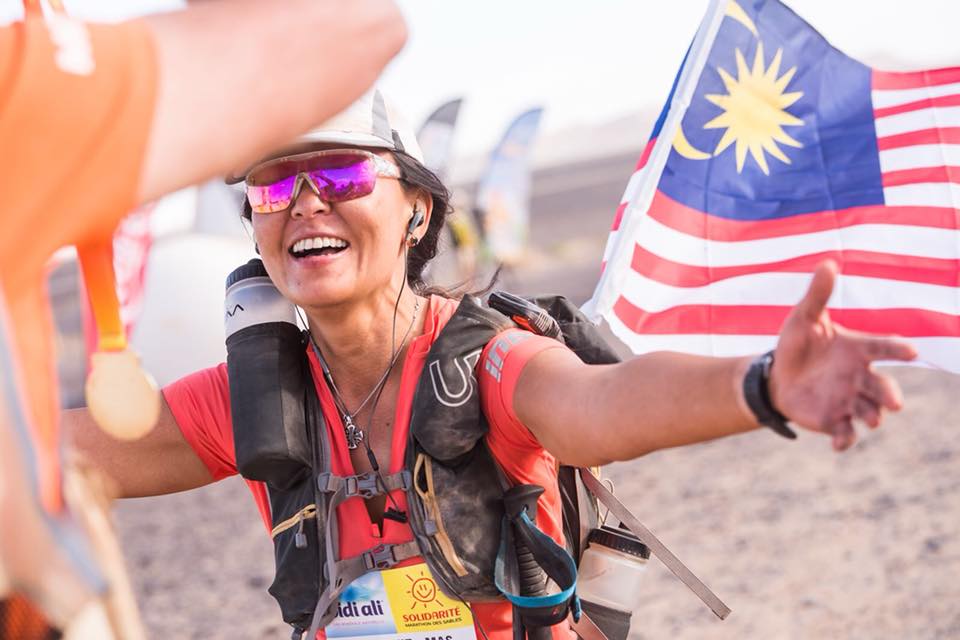
The 2018 edition of the race took place recently, from the 6th to the 16th of April.
Amongst the runners taking part in the latest edition of the MdS had been Sue Ding, a 41 year old Malaysian lawyer who is based in the United Kingdom. She had created history by becoming the first Malaysian woman to complete the MdS, when she had crossed the finish line.
How did it feel for her to cross the finishing line? Said Sue, “I had no more tears left, just smiles and gratitude. I was flying the Malaysian flag, I kissed my cross which was around my neck and I gave thanks for the opportunity to complete a truly magical, life-changing journey.”
She added, “I felt proud to be Malaysian and cross the line flying the flag – it was a real honour.”
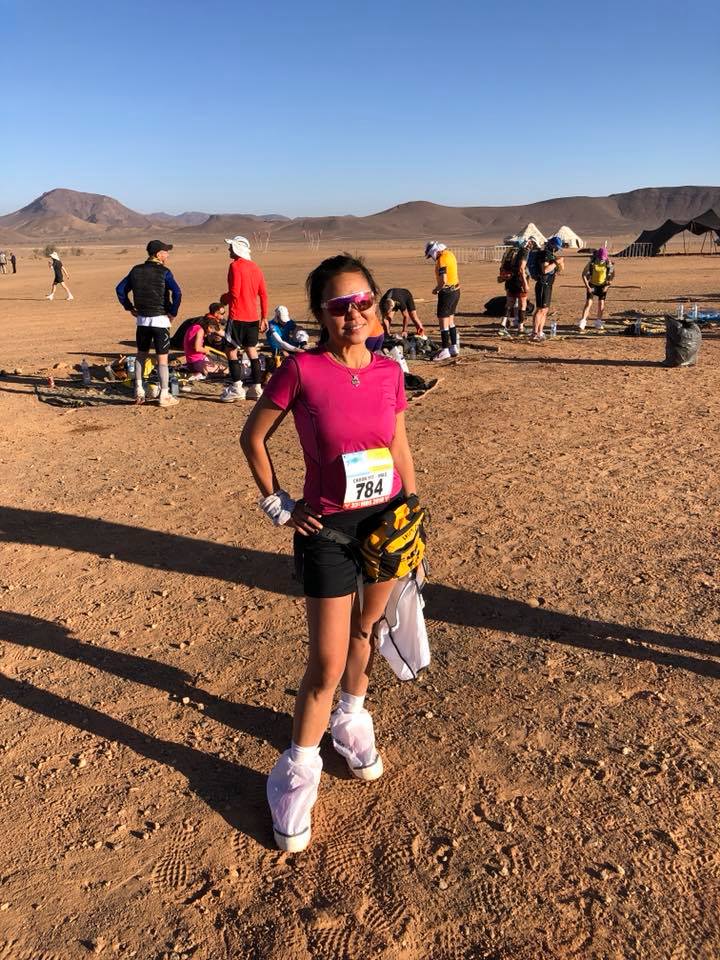
Sue had entered the race on a whim though. She said, “I had heard about the MdS from friends and I had seen images on Instagram. It enticed me, and I was looking for a new challenge and although I thought the race was beyond my ability, I took the plunge and entered.”
She added, “I told nobody for two weeks as I couldn’t decide if I had done the right thing, but when I did finally disclose my intentions, some friends and relatives were negative, saying that I was crazy and that I couldn’t do it. I needed no better motivation to prove them wrong.”
But proving her friends and family wrong had been no easy task as Sue faced extreme challenges out there in the Sahara.
She said, “The challenges I faced, change daily. For example, just starting on the first day seemed like a huge challenge as I was so anxious and nervous. Then on day two, I was silly and neglected taking my salt tablets, this impacted on my hydration and caused me to be dizzy. It was touch and go but with the help of a dear friend, I rallied and reached the finish line.”
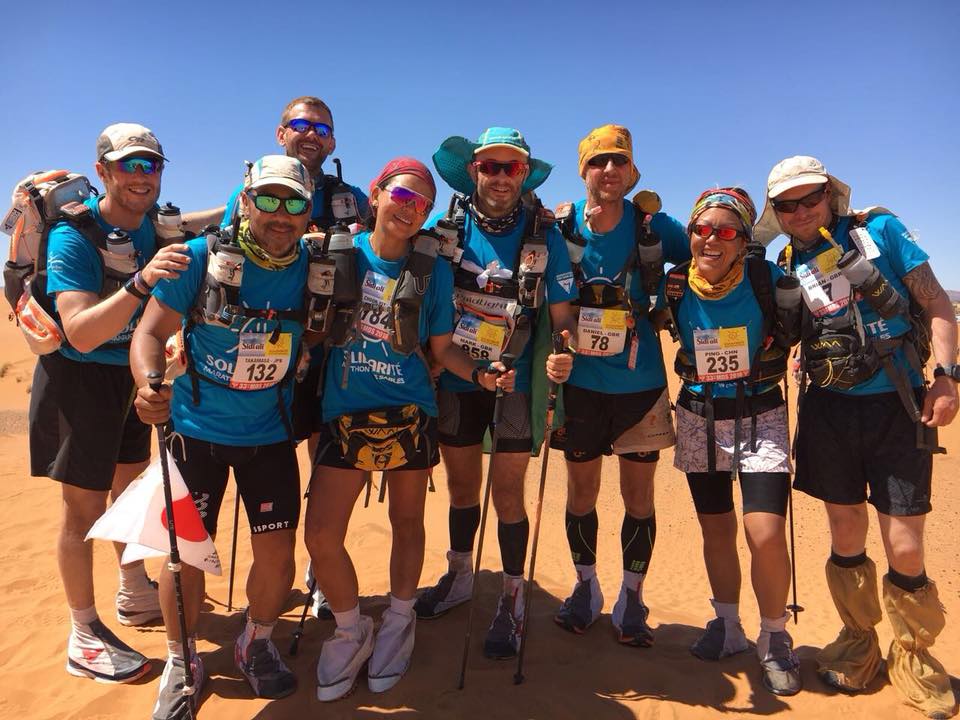
Continued Sue, “Then that night, we were hit by a sandstorm which wiped out our tent and reduced sleep to a minimum. So as you see, the challenges change by the hour or the minute at times. That is what makes MdS so special, it is how you adapt both physically and mentally, to the conditions.”
She admitted though, that there is only so much preparation that can be done for a race such as MdS, and that you have to be resilient and adapt easily rather than having a rigid mindset.
Explained Sue, “One can only prepare so much. I really dedicated myself to the task and prepared methodically for the challenge. But after Tokyo Marathon in February, I picked up a stress fracture. This resulted in no running for three weeks and then a slow return to training. Ironically my final preparation to MdS was terrible and that worried me. But I took heart from a good friend who was always positive and told me, ‘you can do this!’ I trusted them and despite my reservations, I made it to the start line.”
She also admitted that though the environmental conditions were not easy and posed a challenge for the runners, they were still not as bad as she had otherwise feared.
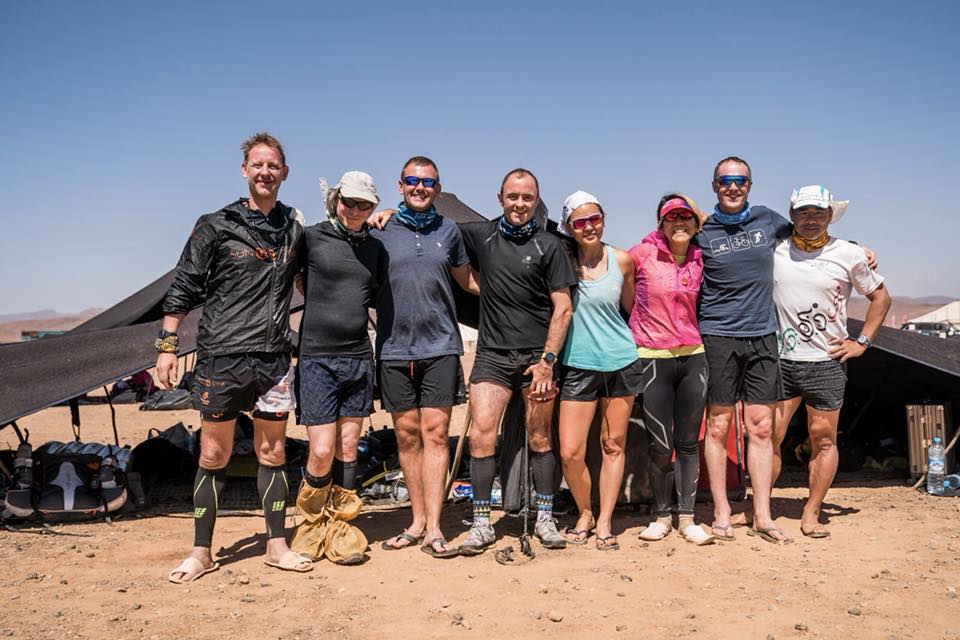
Said Sue, “In all honesty, I was expecting the worst and the reality was not as bad. We had cold nights, sand storms and hot days but I managed. I wore the same clothes for ten days with no showering or proper washing and it was unpleasant but I survived. I also craved fresh food and had to eat dehydrated food. I wanted a different drink other than water, but water was the only thing available.”
She continued, “But this is MdS; it is meant to test you mentally as much as physically and you need to embrace it. If you fight it, your week will be miserable. It is best to laugh and soak up the experience. Going to the toilet is also somewhat an experience… but I’ll let you use your imagination for that one!”
Indeed, despite not preparing as well as she would have liked, Sue had felt that along the way, she blossomed and rose to the challenges and harsh conditions.
Said Sue, “I was so anxious before the race but I feel like I blossomed as the race progressed. I embraced the challenge and got the race done. I did that and nobody can take that away from me. But my tent mates from Tent 95 were incredible and they will be friends for life.”
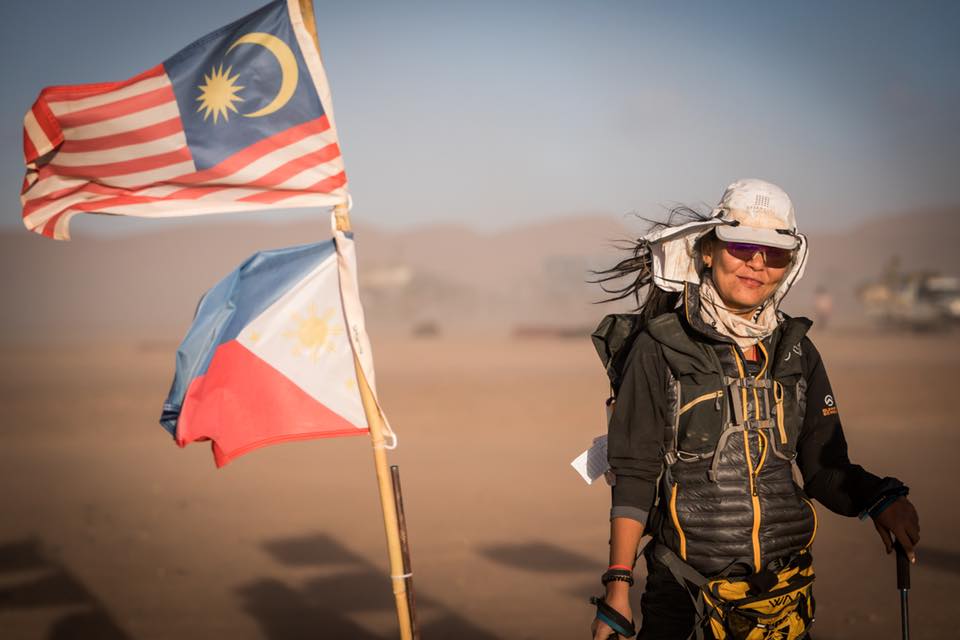
Her anxiety was not only at the beginning of the race though. As the race wore on , Sue admitted that she continued to doubt herself at times but these doubts had continued to strengthen her mind.
She said, “I had huge doubts and anxiety before the race but did as much specific preparation as possible and I listened to friends who told me I could do it. I was so nervous on Day 1 and of course on Day 2, I was extremely worried. However as the race progressed and the stronger mentally I became. I was more tired, my body ached, my feet hurt but my mind was strong. On the marathon stage, I had a moment early on when I cried but I got over it and pushed on despite the pain. There was no way I was giving up or not finishing – I had to prove all the doubters before the race, wrong. One lady had said, if you finish the race, I will eat my hat!’ Guess what? I bought a hat in Morocco after the race…”
She continued, “But I also had a very special friend at the race who shared my journey. This was so special and something I will never forget. This race is a life changer; I was told this before I went to Morocco, and it’s only afterwards that I realise this is true.”
Most of her memorable moments during the race are related to her team mates and friends and the challenges and adversities that they had faced together along the way.
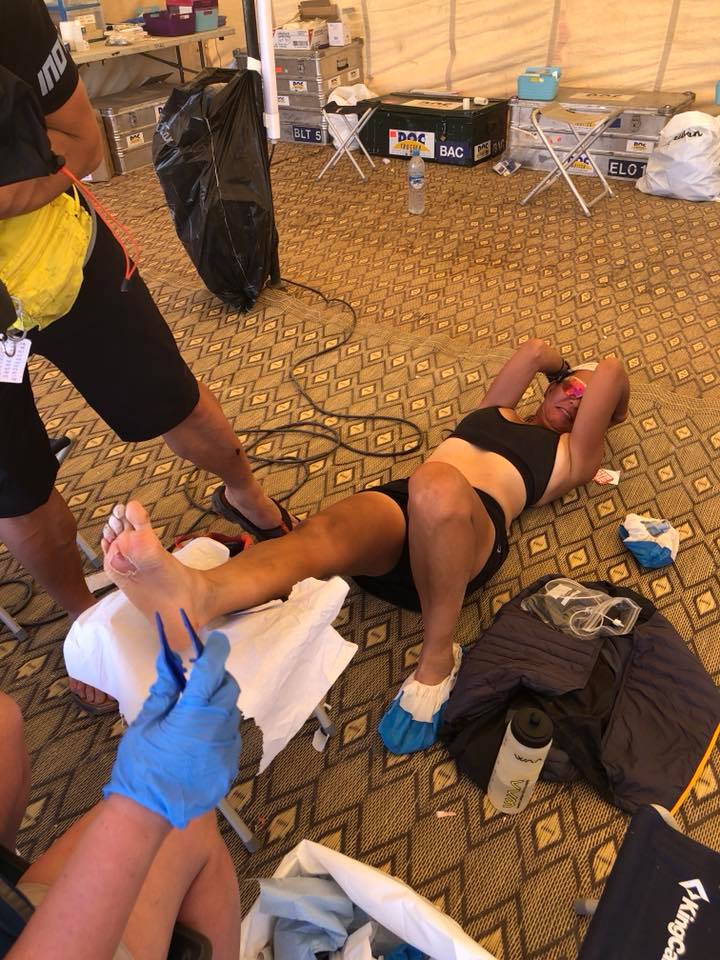
Said Sue, “Tent 95 – Gary, Daniel, Mark, James, Brian, Taka and Denise, were just the best. We laughed, we shared our stories in the morning and the evening and we rallied and encouraged each other. Also, I had low points throughout the race, times of despair and worries if I could push on through. They were my lowest moments but each time they became the most memorable because my friend would always arrive, at just the right time. Almost like an angel, he would turn my frown into a smile and he made the bad, good.”
But these are not the only fond memories that Sue has though, of her MdS experience though.
She added, “On the long day, it was dark and I was walking through large sand dunes and listening to Craig Armstrong music, I looked up to the sky and saw thousands of stars. I was lost in my mind and my thoughts and it was truly magical.”
Sue went on, “I also got some really bad blisters along the way which needed medical treatment and caused great pain. I had to continue on though, ignore the negative and fight each day to achieve my goals.”
And throughout the 250km of running or walking, she thought about all things under the sun because in such a long race as this, there is plenty of time to think and reflect.
Said Sue, “Ha! What didn’t I think about? I put the world to rights, thought about my past, thought about my future. I concentrated on foot ahead of the other and I escaped with music. You have a great deal of time to think and I think this is why, for many, MdS has such an impact. You suddenly realise what is important. I have realised it.”
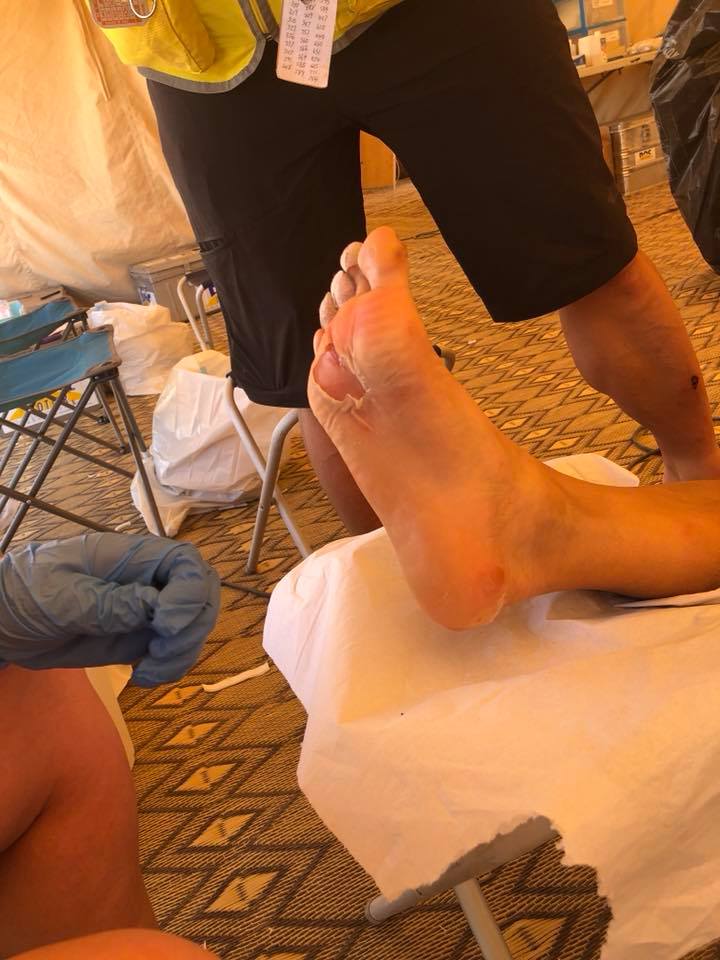
She continued, “Experiences and memories are far greater than things and possessions – the Sahara and the MdS made me feel truly alive, pushed to the limit and beyond.”
In order to train for the MdS, Sue feels that it is possible to base the preparations on a marathon training cycle, but it is not the only type of training that you should do; there are also other types of more specific training that are required of a runner, in order to complete a race like MdS safely.
She explained, “In all honesty, marathon training is actually good preparation for MdS as the individual stages are marathon distance or below. Of course, the exception is the ‘long day’ which in 2018, was 86.4km. Marathon training works well but of course one needs to build upon strength and stamina for the challenge ahead. Therefore most people allow 12 months to get ready for MdS.”
She added, “Time on feet is important and also including some specific training races that provide a similar scenario to MdS. For example, several races in the UK last two or three days therefore providing a mini MdS scenario. I also signed up for a specific desert training camp in Lanzarote (one of the Canary Islands off the coast of West Africa), three months ahead of the race. This proved to be essential as I met other competitors, we trained on terrain specific and comparable to Morocco and I was able to test equipment. We even spent one night sleeping in a volcano to simulate camp conditions in the Sahara.”
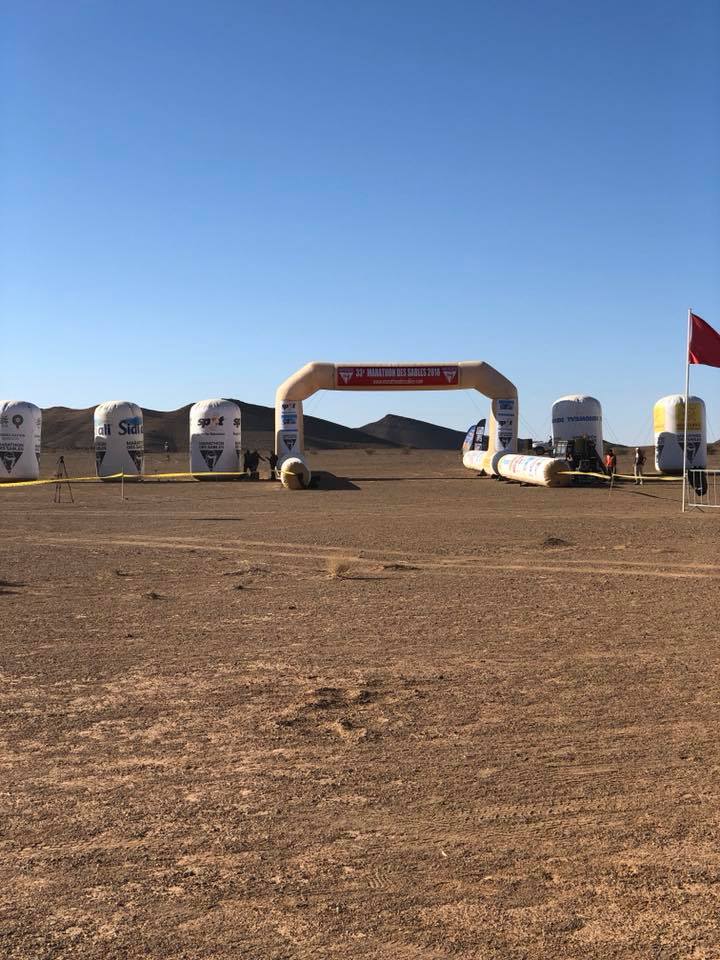
Sue explained that bringing the correct equipment is very important in a race such as the MdS because it can either make or break your race. She said, “I took advice from the training camp and honed my equipment for my needs. I made last minute changes to the pack I would use and I also changed my down jacket. It all worked well. During the race, you must be flexible and adapt to all conditions – tiredness, dehydration, sore legs, snoring tent mates, sharing a space with seven others – these are all things you can’t prepare for. And it is this, that makes MdS such an experience, it is a journey into the unknown.”
She also pointed out that racing at the MdS differs completely to in racing marathons, in that runners would be walking more than actually running though.
Prior to racing MdS, Sue had taken part in several road marathons including those in London and Tokyo. So though she has experience in long distance running, she cannot stress more that MdS is not the same at all, as road marathon racing.
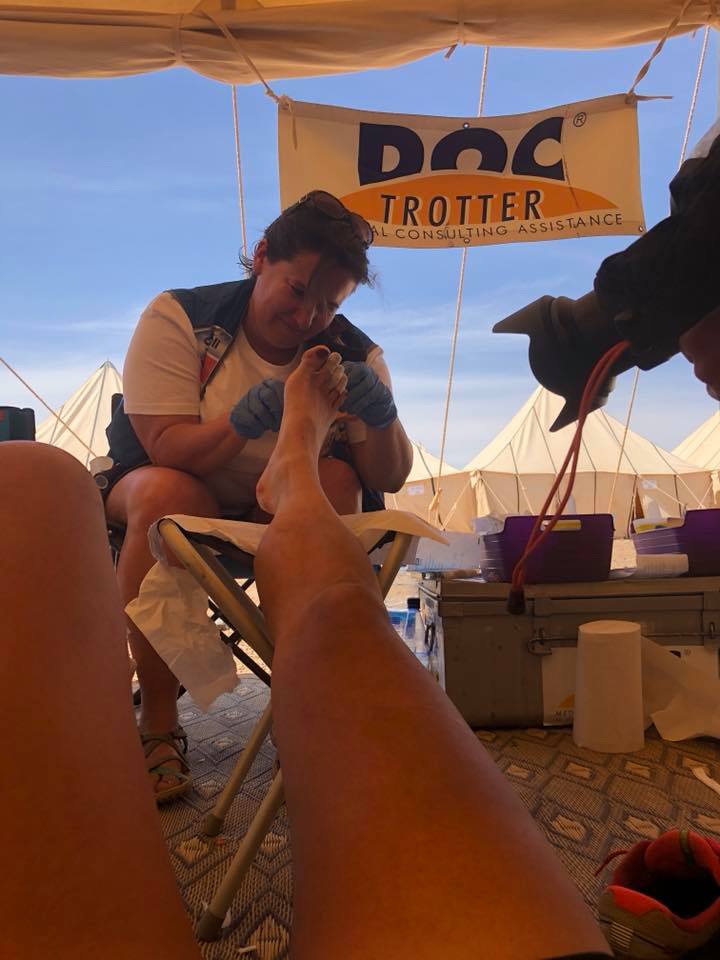
Said Sue, “Many runners think they will run MdS. The reality is that they will not! Walking is an essential and integral part of completing MdS for most participants and I cannot stress enough to walk in training. You also have to prepare the mind for the challenge; if you get the mind in the right place, it will put the body in line.”
She continued, “But other than running or walking, there is no comparison between MdS and road marathons. A road marathon is a challenge but it is safe, you have aid stations, there is always help at hand. MdS is just so much more than running. It brings in elements of survival, it plays games with your mind and it pushes the individual to depths that they may never even have realised they could reach. MdS is truly a transformational experience and although I will always remember my first road marathon, I now think, ‘it is only a marathon!’”
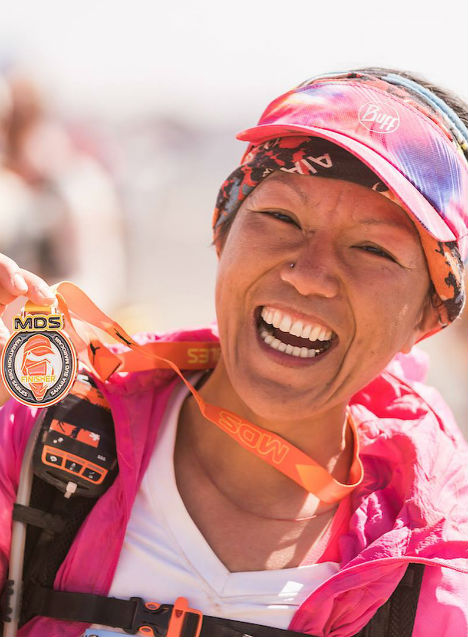
Sue’s main takeaways from her MdS experience are that the human body can cope with a lot more toughness and adversity than what we may think. She said, “We are too protected, too comfortable in the world and we shy away from tough times. A little toughness, some challenge, some hardship and some pain make you realise you are truly alive. I went through so many low points during the race and overcame them, I made new friends and I triumphed over the toughest challenge I have ever undertaken. I now feel invincible, I feel alive!”
She added, “I have done nothing like MdS to compare, so I would give the race a toughness rating of 8 or 9 on a scale of 10. But like I said, get the mind right and anything is possible. Certainly, no change of clothes, carrying everything one needs on one’s back and having rationed food and water takes things to another level and it is a combination of all those elements that makes the race so tough.”
What would Sue do differently if she had the chance to do MdS again? She said, “Well I would definitely try not to get a stress fracture just eight weeks before the race! In general though I feel that everything clicked into place, I would make sure that my shoes did not give me blisters though – I made a mistake there in going a size too large.”
For runners who are contemplating signing up in MdS, Sue has one piece of advice. She said, “Prepare the mind, and the legs and lungs will follow.”
However she warned that the MdS is not a cheap race to take part in though.
She said, “The race costs so much more than just the entry fee. For example, entry fee, flights and hotel is around £4,000 (SGD 7,300). But I started to prepare 12 months in advance. I did training races, I did the Lanzarote training camp, I purchased all of my equipment and then changed my equipment. I added some extras such as staying in Morocco afterwards. I have not tallied up the total cost but it would easily be £10,000 (SGD 18,270).
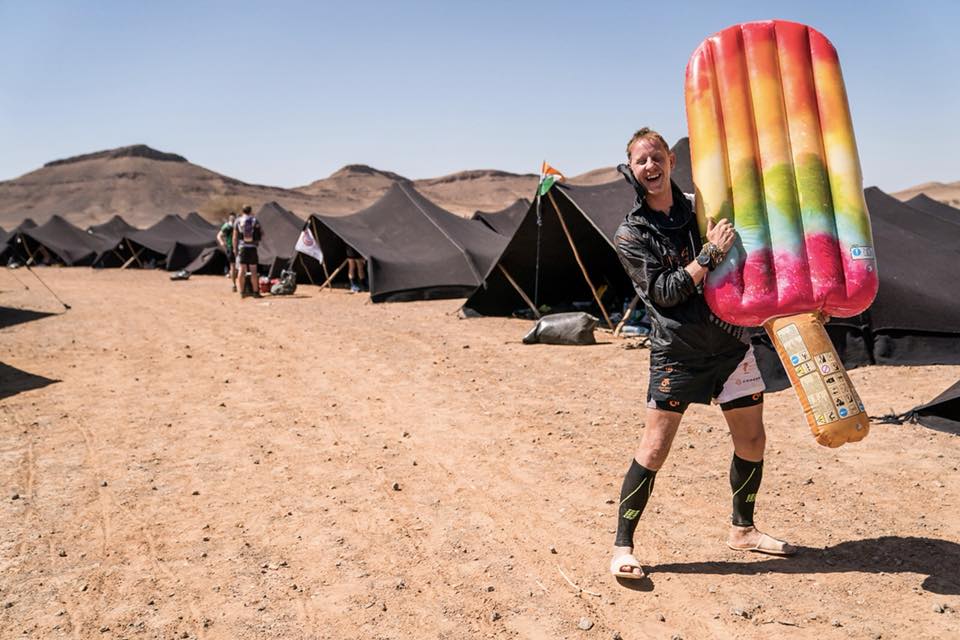
But the experience of taking part in the MdS and the money spent on this race was not just for Sue’s personal gain though. In fact, Sue ran the MdS for two charities – Make A Wish Malaysia and Malaysian Dogs Deserve Better and she has raised about RM 121,036 (SGD 40,992) to date, so far. Her target amount is RM250,000 (SGD 84,670).
Said Sue, “The total amount goes up daily though; but I am turning 42 on 3 May. I would really like it if everyone can help me to get to my target amount of as close as possible.”
She had chosen the two charities both because of her desire to help children who are less fortunate than she, and also due to her love for animals. So these two charities have a personal connection for her.
Inspired by Sue’s MdS journey? Donate to her cause at https://www.simplygiving.com/appeal/sueding.
Photos used in this post are credited to Ian Corless Photography.

Leave a Comment